Mighty Enlil Of The Sumerian Pantheon Of Gods
A. Sutherland - AncientPages.com - Ancient Sumer had a very complex pantheon of gods and goddesses, but four of these powerful figures played an important role because they were creators of everything.
Enlil (EN.LIL – his name meant "lord of the airspace" or “the air-god”) was the king of earth and heaven.
According to Sumerian beliefs, Enlil arrived on Earth well before the human race was created. He was Anu's eldest son; these two share the same epithets in different ancient texts, which describe Enlil -the second in the triad of Sumerian supreme gods – as "The Great Mountain" or "King of All the Lands" (lugal-kur-kur-ra) and “Father of the Gods.
Enlil's role in is based on Enlil’s power and authority is clearly emphasized in the Mesopotamian mythology; he creates and destroys and is the "decreer of fates".
He has the right to rule the world and to give kingship to kings and rulers, who turn to him to verify their claims to power. Enlil himself announces the king's name and awards him the scepter - a sign of his favor and acknowledgment.
He had placed gods on earth, arranged dwellings and cult places for them, which were not to be changed. Each god owned a special territory, which included a house, a temple to live in and priests to serve him. Enlil’s holy city of Nippur was called “built on its own”.
One example is mentioned in “The Lament for Urim” when Enlil is said to have "brought the storm of abundance away", to have "annihilated the land, silenced the city" (ETCSL 2.2.2).
As the "Lord of abundance", Enlil is a provider, but at the same time, this great authority could also take such plenty away from people and devastate the land.
Although Anu had authority over the pantheon of Sumer, Enlil was even more powerful as he embodied energy and force. He was also the god of agriculture, who separated earth and heaven to give the place for planet’s seeds to grow. He designed the plans to bring all trees, plants, and seeds to people on Earth.
 According to one myth, Enlil raped his consort Ninlil (Sud, in a Sumerian myth), the goddess of grain.
According to one myth, Enlil raped his consort Ninlil (Sud, in a Sumerian myth), the goddess of grain.
Despite the fact that Sumerian gods were powerful they were obliged to follow certain rules. Even the supreme god, Enlil, was once punished for his transgressions and exiled to the underworld.
Enlil’s cult center was at Nippur, the city located in central southern Mesopotamia and dedicated to him; his great sanctuary, the E.KUR ("house which is like a mountain") was also located at Nippur. In the divine area of Nippur, Enlil had his court, where he met with the gods for assembly.
As the “Lord of Destinies”, Enlil was the keeper of the “Tablet of Destiny”, which was stolen from him the evil bird-god Zu, who knew that the wearer of this tablet had the full control of the universe and fates of all.
In the Akkadian sources, Enlil’s nature is often described as malevolent and his “… command no god can set aside”. However, many disagree with this description of the mighty Enlil. Contrary to the common belief, Enlil was not a destructive deity who intended to harm to people. Instead, he was given the task to bring destruction and misfortune when it was required and decided by the Pantheon’s gods.
Many ziggurats devoted to Enlil existed in different locations such as Assur, Babylon, Dur-Kurigalzu and, probably, in Elam, outside of Mesopotamia.
Written by – A. Sutherland AncientPages.com Staff Writer
Copyright © AncientPages.com All rights reserved. This material may not be published, broadcast, rewritten or redistributed in whole or part without the express written permission of AncientPages.com
Expand for referencesReferences:
E. Wilshire, Insight into Two Biblical Passages
R.G. Kratz,H. Spieckermann, One God – One Cult – One Nation: Archaeological and Biblical Perspectives
More From Ancient Pages
-
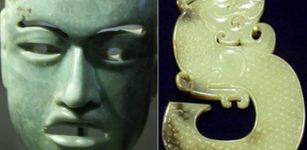 Secret Ancient Powers Of Jade: Sacred Green Healing Stone That Can Conquer Time And Guarantee Immortality
Artifacts | Oct 1, 2016
Secret Ancient Powers Of Jade: Sacred Green Healing Stone That Can Conquer Time And Guarantee Immortality
Artifacts | Oct 1, 2016 -
 On This Day In History: The Battle of Mortimer’s Cross – On Feb 2, 1461
News | Feb 2, 2017
On This Day In History: The Battle of Mortimer’s Cross – On Feb 2, 1461
News | Feb 2, 2017 -
 Ancient Books, Scrolls And Manuscripts Burned By Church And Evil Emperors
Artifacts | Aug 27, 2018
Ancient Books, Scrolls And Manuscripts Burned By Church And Evil Emperors
Artifacts | Aug 27, 2018 -
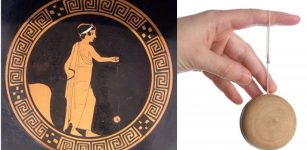 Oldest Yo-Yo Dates Back To 400-500 B.C
Ancient History Facts | May 13, 2019
Oldest Yo-Yo Dates Back To 400-500 B.C
Ancient History Facts | May 13, 2019 -
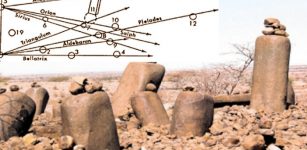 Namoratunga – Kenya’s Fascinating Megalithic Site Oriented Toward Specific Stars And Constellations
Featured Stories | Jul 6, 2021
Namoratunga – Kenya’s Fascinating Megalithic Site Oriented Toward Specific Stars And Constellations
Featured Stories | Jul 6, 2021 -
 What Routes Did Homo Sapiens Take On His Way From Africa To Europe And Asia? Out Of Africa Path Examined
Archaeology | Dec 26, 2021
What Routes Did Homo Sapiens Take On His Way From Africa To Europe And Asia? Out Of Africa Path Examined
Archaeology | Dec 26, 2021 -
 Stunning 3,400-Year-Old Palace Of the Kingdom Of Mitanni Discovered Thanks To Drought
Archaeology | Jun 27, 2019
Stunning 3,400-Year-Old Palace Of the Kingdom Of Mitanni Discovered Thanks To Drought
Archaeology | Jun 27, 2019 -
 Study Of Environmental Conditions Of Early Humans In Europe And The Out-Of-Africa Migration
Archaeology | Sep 8, 2021
Study Of Environmental Conditions Of Early Humans In Europe And The Out-Of-Africa Migration
Archaeology | Sep 8, 2021 -
 1,750-Year-Old Fresco Travertines Buried Underground – Recovered In Ancient Laodicea
Archaeology | Mar 19, 2020
1,750-Year-Old Fresco Travertines Buried Underground – Recovered In Ancient Laodicea
Archaeology | Mar 19, 2020 -
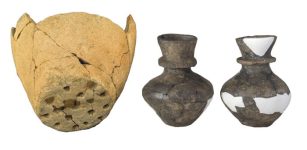 Neolithic Ceramics Reveal Dairy Processing From Milk Of Multiple Species
Archaeology | Mar 15, 2023
Neolithic Ceramics Reveal Dairy Processing From Milk Of Multiple Species
Archaeology | Mar 15, 2023 -
 Mysterious Runic Inscription Found In Mighty Viking Ship Burial Surprises Archaeologists
Vikings | Mar 25, 2025
Mysterious Runic Inscription Found In Mighty Viking Ship Burial Surprises Archaeologists
Vikings | Mar 25, 2025 -
 More Than 10,000 Pre-Columbian Earthworks Remain Hidden Throughout Amazonian Forests
Archaeology | Oct 5, 2023
More Than 10,000 Pre-Columbian Earthworks Remain Hidden Throughout Amazonian Forests
Archaeology | Oct 5, 2023 -
 A 3,500-Year-Old Grape Seed Sheds Light On Great Tradition Of Vineyards Of Anatolia’s Çal And Region
Archaeology | Sep 13, 2023
A 3,500-Year-Old Grape Seed Sheds Light On Great Tradition Of Vineyards Of Anatolia’s Çal And Region
Archaeology | Sep 13, 2023 -
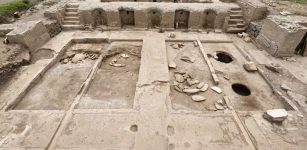 Unique Ancient Roman Winery With Marble Tiling And Fountains Of Grape Juice Unearthed In Rome
Archaeology | Apr 17, 2023
Unique Ancient Roman Winery With Marble Tiling And Fountains Of Grape Juice Unearthed In Rome
Archaeology | Apr 17, 2023 -
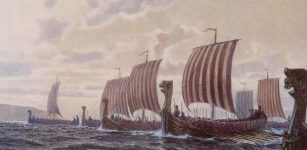 Huge Viking Winter Camp Unearthed In England
Archaeology | May 19, 2017
Huge Viking Winter Camp Unearthed In England
Archaeology | May 19, 2017 -
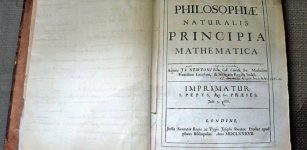 On This Day In History: ‘Principia Mathematica’ Monumental Work Published By Isaac Newton – On July 5, 1687
News | Jul 5, 2016
On This Day In History: ‘Principia Mathematica’ Monumental Work Published By Isaac Newton – On July 5, 1687
News | Jul 5, 2016 -
 Sobek: A 2,500-Year-Old Mummified Nile Crocodile – On Display At The British Museum
Archaeology | Dec 9, 2015
Sobek: A 2,500-Year-Old Mummified Nile Crocodile – On Display At The British Museum
Archaeology | Dec 9, 2015 -
 Early Humans Were Probably Driven To Extinction By Climate Change- Study Suggests
Civilizations | Oct 15, 2020
Early Humans Were Probably Driven To Extinction By Climate Change- Study Suggests
Civilizations | Oct 15, 2020 -
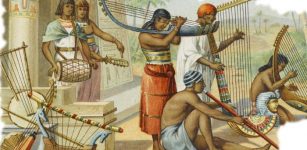 How Important Was Music In Ancient Egypt?
Ancient History Facts | Jan 16, 2021
How Important Was Music In Ancient Egypt?
Ancient History Facts | Jan 16, 2021 -
 Murder Of Bardiya: Son Of Cyrus The Great And The Riddle Of The Impostor
Historical Figures | Dec 7, 2018
Murder Of Bardiya: Son Of Cyrus The Great And The Riddle Of The Impostor
Historical Figures | Dec 7, 2018


